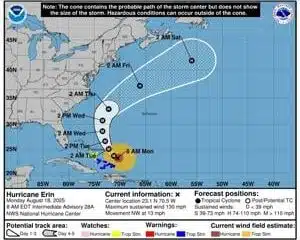(The Center Square) – Establishing a tax credit program of up to $1,700 in 2027 for North Carolina school children has a historical pathway to overcoming gubernatorial veto, according to pattern analysis by The Center Square.
No permits for concealed carry, however, is quite a bit more challenging.
Outside of the fatigued question on the Legislature putting forth a full two-year spending plan, those two vetoes and three others tied to diversity policies are creating the main storylines for the Legislature’s return next week. The pre-Labor Day session has no guarantees of movement on any; rather, all will depend on chamber leaders having members present and their votes known as to what opportunities will be taken.
Senate President Pro Tempore Phil Berger, R-Rockingham, and Speaker Destin Hall, R-Caldwell, in the House of Representatives have pledged to get the timing right, whether next week or later.
Eight vetoes were overridden into law by both chambers on July 29. They included measures on immigration, what was known as the REINS Act, environmental goals, powers of the state auditor, clarifying men and women, donor privacy, and firearms.
Senators completed the override on four more – two related to diversity policy, one on permitless concealed carry and another on immigration. If the House can get the override for a third diversity bill that originated in its chamber, the Senate is expected to follow suit.
The other two vetoes involve a squatters bill that went an alternative route to first-term Democratic Gov. Josh Stein’s signature, and the federal school choice initiative championed by second-term Republican President Donald Trump.
Plenty of attention was rightly thrust upon the four Democrats in the House of Representatives helping move the Grand Old Party agenda this summer. Reps. Shelly Willingham of Edgecombe County six times and Carla Cunningham of Mecklenburg County five times were most instrumental. Twice each, Reps. Cecil Brockman of Guilford County and Nasif Majeed of Mecklenburg County were on board to get the chamber’s overrides to 72 votes or higher.
For each of the eight vetoes that got an override, at least one Democrat in the House had voted for the measure at passage. Only once – Brockman on donors – did a yes vote switch to no. And once – Rep. Ben Moss, R-Richmond, on the power bill – a Republican changed a no vote to yes at override.
That would bode well for the push – Educational Choice for Children Act (House Bill 87) – to make North Carolina the first in the nation codifying the signature education initiative of the president. Cunningham and Willingham were each on board, though Republicans had three excused and another – Rep. Neal Jackson, R-Moore – choosing not to vote.
It doesn’t bode well for becoming the 30th state to be without permit for concealed carry.
Freedom to Carry NC, known also as Senate Bill 50, not only had no Democrats in the House at passage, but it also has Republican Reps. William Brisson of Bladen County and Ted Davis Jr. of New Hanover County with no votes at passage. Ten other Republicans took excused absences, including notably Rules Chairman John Bell of Wayne County, Rep. Tricia Cotham of Mecklenburg County and Rep. Allen Chesser of Nash County.
The North Carolina Border Protection Act, known also as Senate Bill 153, was straight party line. The 11 excused absences among Republicans included notables Cotham and Rep. Erin Pare, R-Wake.
For the package of bills on diversity, equity and inclusion, the proposals would respectively take them out of state agencies, K-12 education, and higher education. None drew a Democrat’s vote in either chamber.
On the Republican side, Reps. Jackson, John Blust of Guilford County, Brenden Jones of Columbus County and John Sauls of Lee County had excused absences for all three votes; Hall and Rep. Edwin Goodwin of Chowan County chose not to vote on the higher ed bill; and Rep. Mike Clampitt of Swain County chose not to vote on the state agencies bill.
Six other Republicans also had excused absences mixed among the three votes.
Three-fifths majorities are needed in each chamber to get an override, both chambers must accomplish it, and there’s only one override vote per bill. Republicans have majorities of 30-20 in the Senate and 71-49 in the House.
And votes at passage are not guaranteed through veto override. Never was that clearer than the 2023-24 session when a bill related to evictions sailed through the chambers 44-0 and 113-1, only to be vetoed by former Democratic Gov. Roy Cooper. It became law on the strength of override votes of 27-17 and 72-44.
Already on the eight overrides this session, six senators and 12 House members have changed votes at least once from yes at passage to no at override. Respective chamber leaders at three each are Sen. Dan Blue, D-Wake, and Rep. Charles Smith, D-Cumberland. One senator and four House members have already made such changes twice each.
In the 2023-24 session, all 29 vetoes by Cooper were overridden amid 19 senators and 34 House members changing votes at least once between passage and override.
The article predominantly reports on legislative actions and veto override efforts in North Carolina with an emphasis on bills favored by Republican lawmakers, such as tax credits for school children, permitless concealed carry, border protection, and anti-diversity policies. While it maintains a largely factual tone, the selection and framing of issues—highlighting GOP achievements and describing Democratic opposition without similar context—suggests a subtle center-right leaning. The language is generally neutral but implicitly supports the Republican legislative agenda by focusing attention on successful overrides and the challenges Democrats face, rather than critically examining the content or broader implications of the policies. Overall, the piece reports on political events and positions but does so through a lens sympathetic to conservative priorities.


















































